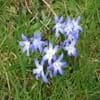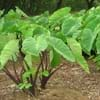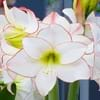Life Span
Perennial
Perennial
Type
Bulb or Corm or Tuber
Broadleaf Evergreen
Origin
Mediterranean, Turkey
Southeastern Asia, China, Japan, Melanesia, Micronesia, Polynesia, Australia
Types
Not Available
Not Available
Habitat
meadows, Terrestrial
moist forests, Tropical areas, Tropical Indian Ocean Islands
USDA Hardiness Zone
3-9
10-15
AHS Heat Zone
9-1
Not Available
Habit
Clump-Forming
Oval or Rounded
Flower Color
White, Blue, Pink, Violet
White, Pink
Flower Color Modifier
Bicolor
Bicolor
Fruit Color
Not Available
Purple, Rose, Bronze, Brown, Sandy Brown, Black
Leaf Color in Spring
Green
Green, Dark Green
Leaf Color in Summer
Light Green
Green, Dark Green
Leaf Color in Fall
Several shades of Green
Dark Green
Leaf Color in Winter
Light Green
Dark Green
Leaf Shape
Long Linear
Lanceolate
Plant Season
Spring, Winter
Spring, Summer, Fall, Winter
Sunlight
Full Sun, Partial Sun
Full Sun, Partial Sun
Growth Rate
Medium
Medium
Type of Soil
Loam
Loam, Sand
The pH of Soil
Acidic, Neutral, Alkaline
Acidic, Neutral, Alkaline
Soil Drainage
Well drained
Well drained
Bloom Time
Early Spring, Late Winter
Early Spring, Spring, Late Spring, Early Summer, Summer, Late Summer, Early Fall, Fall, Late Winter, Indeterminate
Tolerances
Drought
Drought, Salt
Where to Plant?
Container, Ground, Pot
Ground
How to Plant?
From bulbs, Seedlings
Cuttings, Seedlings
Plant Maintenance
Medium
Medium
Watering Requirements
Average Water Needs, Do Not over Water, Do not water frequently, Keep the ground moist but not water-logged, Never Over-water
Water Deeply, Water during periods of drought
In Summer
Lots of watering
Lots of watering
In Spring
Moderate
Moderate
In Winter
Average Water
Average Water
Soil pH
Acidic, Neutral, Alkaline
Acidic, Neutral, Alkaline
Soil Type
Loam
Loam, Sand
Soil Drainage Capacity
Well drained
Well drained
Sun Exposure
Full Sun, Partial Sun
Full Sun, Partial Sun
Pruning
Remove damaged leaves, Remove dead branches, Remove dead leaves
Remove damaged leaves, Remove dead branches, Remove dead leaves
Fertilizers
All-Purpose Liquid Fertilizer
All-Purpose Liquid Fertilizer
Pests and Diseases
Red blotch
Red blotch
Plant Tolerance
Drought
Drought
Flower Petal Number
Single
Single
Foliage Texture
Fine
Coarse
Foliage Sheen
Matte
Glossy
Attracts
Bees, Flying insects
Bees
Allergy
Skin rash
Not Available
Aesthetic Uses
Beautification, Bouquets, Ground Cover, Showy Purposes
Not Available
Beauty Benefits
Not Available
Not Available
Environmental Uses
Air purification
Air purification
Medicinal Uses
No Medicinal Use
Heart problems, Itching
Part of Plant Used
Flowers
Branch, Stem, Wood
Other Uses
Decoration Purposes, Showy Purposes, Used as Ornamental plant
Unknown
Used As Indoor Plant
Yes
No
Used As Outdoor Plant
Yes
Yes
Garden Design
Alpine, Container, Foundation, Lawns and Turf, Mixed Border, Rock Garden / Wall, Wildflower
Container, Feature Plant, Hedges, Mixed Border, Screening, Wind Break, Street Trees, Tropical
Botanical Name
CHIONODOXA
CERBERA manghas
Common Name
Chionodoxa, Glory-of-the-Snow
Arbon, Mifukuragi, Beach Milkwood, Dog Bane, Dog Bone, Grey Milkwood, Milkwood, Grey, Milkwood, Pink Eyed Cerbera, Rubber Tree
In Hindi
Chionodoxa
Bintaro
In German
Chionodoxa
Pong pong
In French
Chionodoxa
Faux manguier
In Spanish
Chionodoxa
Pong pong
In Greek
Chionodoxa
Pong pong
In Portuguese
Chionodoxa
Pong pong
In Polish
Chionodoxa
Pong pong
In Latin
Chionodoxa
Pong pong
Phylum
Platyhelminthes
Vascular plant
Class
Cestoda
Magnoliopsida
Order
Liliales
Gentianales
Family
Liliaceae
Apocynaceae
Clade
Angiosperms, Monocots
Angiosperms, Asterids, Eudicots
Tribe
Not Available
Plumerieae
Subfamily
Not Available
Rauvolfioideae
Number of Species
Not Available
Season and Care of Chionodoxa and Pong-pong
Season and care of Chionodoxa and Pong-pong is important to know. While considering everything about Chionodoxa and Pong-pong Care, growing season is an essential factor. Chionodoxa season is Spring and Winter and Pong-pong season is Spring and Winter. The type of soil for Chionodoxa is Loam and for Pong-pong is Loam, Sand while the PH of soil for Chionodoxa is Acidic, Neutral, Alkaline and for Pong-pong is Acidic, Neutral, Alkaline.
Chionodoxa and Pong-pong Physical Information
Chionodoxa and Pong-pong physical information is very important for comparison. Chionodoxa height is 10.20 cm and width 5.10 cm whereas Pong-pong height is 460.00 cm and width 460.00 cm. The color specification of Chionodoxa and Pong-pong are as follows:
Chionodoxa flower color: White, Blue, Pink and Violet
Chionodoxa leaf color: Green
Pong-pong flower color: White and Pink
- Pong-pong leaf color: Green and Dark Green
Care of Chionodoxa and Pong-pong
Care of Chionodoxa and Pong-pong include pruning, fertilizers, watering etc. Chionodoxa pruning is done Remove damaged leaves, Remove dead branches and Remove dead leaves and Pong-pong pruning is done Remove damaged leaves, Remove dead branches and Remove dead leaves. In summer Chionodoxa needs Lots of watering and in winter, it needs Average Water. Whereas, in summer Pong-pong needs Lots of watering and in winter, it needs Average Water.





